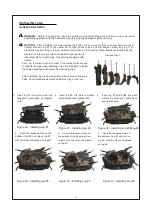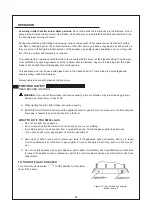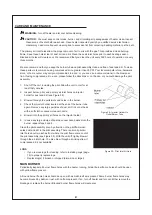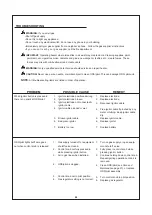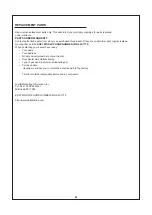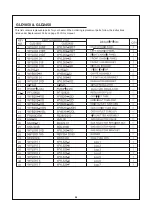
3
Figure - Attaching Flexible Gas
Hose to Heater Gas Regulator
Figure 3-A - External Regulator
with Vent Pointing Down For NG
Figure 3-B - External Regulator
with Vent Pointing Down For LP
10. Attach base assembly to fireplace floor using two masonry screws
(in hardware package) (see Figure ).
A CSA/AGA design-certified equipment shutoff valve with
/8-inch NPT tap is an acceptable alternative to test gauge connec-
tion. Purchase the optional CSA/AGA design-certified equipment
shutoff valve from your dealer.
The installer must supply an external regulator. The external regula-
tor will reduce incoming gas pressure. You must reduce incoming gas
pressure to minimum allowable on rating label. If you do not reduce
incoming gas pressure, heater regulator damage could occur. Install
external regulator with the vent down as shown in Figure 3. Pointing
the vent down protects it from freezing rain or sleet.
Installation must include equipment shutoff valve, union, and plugged
/8-inch NPT tap. Locate NPT tap within reach for test gauge hook
up. NPT tap must be upstream from heater (see Figure 4). To pre-
vent performance problems, Propane/LP tank of less than 00 lbs.
capacity is not recommended.
IMPORTANT:
Install an equipment shutoff valve in an accessible
location. The equipment shutoff valve is for turning on or shut-
ting off the gas to the appliance. Apply pipe joint sealant lightly
to male threads. This will prevent excess sealant from going
into pipe. Excess sealant in pipe could result in clogged heater
valves.
CAUTION:
Use only a new, black iron or steel pipe. Internally-
tinned copper tubing may be used in certain areas. Check your
local codes. Use pipe of large enough diameter to allow proper
gas volume to heater. If pipe is too small, undue loss of pressure
will occur.
CAUTION:
Use pipe joint sealant that is resistant to natural
gas(NG) or liquid petroleum (LP) gas.
Figure 4 - Gas Connection
We recommend that you install a sediment trap in the supply line as shown in Figure 4. Place sediment trap where
it is within reach for cleaning and where trapped matter is not likely to freeze. A sediment trap traps moisture and
contaminants. This keeps them from going into heater controls. If sediment trap is not installed or is installed incorrectly,
heater may not run properly.
IMPORTANT:
Hold pressure regulator with wrench when connecting it to gas piping and/or fittings.
Summary of Contents for GLD1850
Page 27: ...27 27...
Page 29: ...29 29 Printed in China...

















